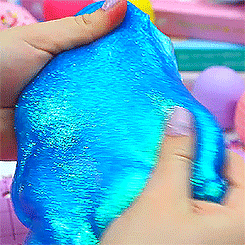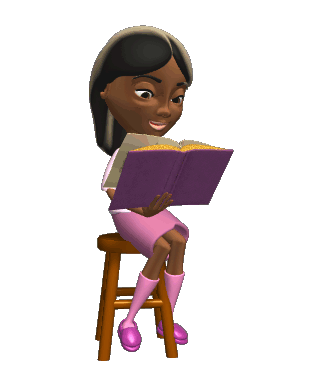
Beginning Reading Design
Sticky Slick Slime
Rationale: This lesson teaches children about the short vowel correspondence i=/i/. In order to be able to read, children must learn to recognize the spellings that map word pronunciations. In this lesson children will learn to recognize, spell, and read words containing the spelling i=/i/. They will learn a meaningful representation (Sticky Slick Slime), they will spell and read words containing this spelling in a letterbox lesson, and read decodable book that focuses on the correspondence i=/i/.
Materials: Graphic image of kid playing with slime; cover-up critter; whiteboard; letter manipulatives for each child and magnetic letters for teacher: a, b, f, g, i, k, n, p, s, t; list of spelling words on poster or whiteboard to read: gift, it, pig, sit, bat, and sink; decodable text: Tin Man Fix It and assessment worksheet.
Procedures:
-
Say: In order to become expert readers we need to learn the code that tells us how to pronounce words. Today we are going to learn about short vowel /i/. when I say “Sticky Slick Slime” [show graphic image]
-
Say: Before we learn about the spelling of /i/, we need to listen for it in some words. When I listen for /i/ in words. When I say /i/ my lips aren’t together and my tongue is at the bottom of my mouth. [make vocal gesture for /i/]. Ill show you first: him. Now I’m going to see if it’s in ham. Hmm, I didn’t hear /i/ in ham. Now you try. If you hear /i/ say, “Sticky Slick Slime.” If you don’t hear /i/ say “that’s it.” Is it in lip, say, gift, face, ring, ship? [Have children make motion to mimic holding slime in hand and separating it when they hear /i/ in a word]
-
Say: Now let’s look at the spelling of /i/ that we’ll learn today. One way to spell /i/ is with the letter i. write i on the board. What if I want to spell gift? “On your birthday you get lots of gifts.” To spell gift in letterboxes, first I need to know how many phonemes I have in the word, so I stretch it out and count: /g//i//f//t/. I need 4 boxes. I heard /i/ just before the /f/ so I’m going to put the /i/ in the second box. That’s easy? Now ill need g for the /g/ and I’ll put that in the first box. Now we have /g/ in the first box and /i/ in the second box, so we have 2 more boxes left. /g//i//f//t/ I hear /f/ after the /i/, so ill put the /f/ in the third box. /t/ is the last sound I hear, so ill put the /t/ in the fourth box.
-
Say: Now I’m going to have you spell some words in letterboxes. You’ll start out with two boxes for it. “It was very hot this weekend at the football game.” What should go in the first box? [Respond to children’s answers]. What goes in the second box? Ill check your spelling while I walk around the room. [observe progress.] You’ll need three letterboxes for the word. Listen for the beginning sound that goes in the first box. Here’s the word: pig; I like to see the big pigs when I go to the farm. [Allow children to spell words.] Time to check your work. Watch how I spell it in my letterboxes on the board: p-i-g. See if you’ve spelled it the same way. Try another with three boxes: sit, I like to sit after I play outside. [Have volunteer spell it in the letterbox on the front board for children to check their work. Repeat this step for each new word.] Next word. Listen to see if this word has i=/i/ on it before you spell it: bat; I like the black bat in the Halloween movie. Did you hear the i=/i/ in it before you spelled it? Why not? [Allow children to respond.] Right, because we didn’t hear the “Sticky Slick Slime.” We spell it with our short vowel a. [volunteer spells it in the from board.] Did you remember to spell a=/a/ with a? Now let’s try 4 phonemes: sink; the sink is full of dirty dishes, so I need to wash them. One more then we’re done with spelling, and this time you need five boxes: gift; When I get home, I am going to open all my birthday gifts. Remember to stretch it out to get this tough word.
-
Say: Now I am going to let you read the words you’ve spelled, but first I’ll show you how I would read a tough word. [Display poster with gift on the top and model reading the word.] First I see there’s a /i/ after the /g/ so that that must mean that “Stick Slick Slime” is in my hands that’s the short vowel /i/. I’m going to use my cover-up to get the first part. [Uncover and blend sequentially before the vowel, then blend with the vowel.] /g/=/g/. Now I’m going to blend that with the /i/= /g//i/. Now all I need is the end, /f/ /t/. Gift; that’s is. Now it’s your turn, everyone together. [Have children read words in unison. Afterwards, call on individuals to read one word in the list until everyone has had a turn.]
-
Say: You’ve done a great job and reading words with our new spelling for i=/i/. Now we are going to read a book called Tin Man Fix It. This story is about a tin man named Tim and man named Jim who is a fix-it man. One day Tim and Jim are outside working in the garden. Sid the big kids comes down the side walk very fast on his skateboard. He was going so fast down the sidewalk that he hit Jim. Will Jim be able to fix Jim? Let’s pair up and take turns reading Tin Man Fix It to find out what happens. [Children pair up and take turns reading alternate pages each while teacher walks around the room monitoring progress. After individual paired reading, the class rereads Tin Man Fix It aloud together, and stops between page turns to discuss the plot.]
-
Say: that was a fun story. Was Jim able to fix Jim? Right, he could fix Jim. How many pins did Jim have to fit into Tim’s hip? Yes, it was six pins in Tim’s hip. Before we finish up with our lesson about one way to spell i=/i/, I want to see how you solve a reading problem. On this worksheet, we must read the words and circle the words that that a short /i/ sound. After we have found all the words with the short /i/ sound you will write then in alphabetic order. Check your work to make sure the words you circled follow the “Sticky Slick Slime” i=/i/ example we used. [collect worksheets to evaluate individual child progress.]
Resources:
Worksheet- https://www.superteacherworksheets.com/phonics/short-i-abc_IIIII.pdf?up=1466611200
Book- Tin Man Fix-It https://www.amazon.com/Tin-Man-Fix-Phonics-Readers/dp/0886798566
Bruce Murry, http://www.auburn.edu/academic/education/reading_genie/
Payton Robertson, Iggy The Silly Icky Iguana https://plr0012.wixsite.com/ms-robertson/beginning-reading
click here to return to the reading genie website http://www.auburn.edu/academic/education/reading_genie/horizons.html
